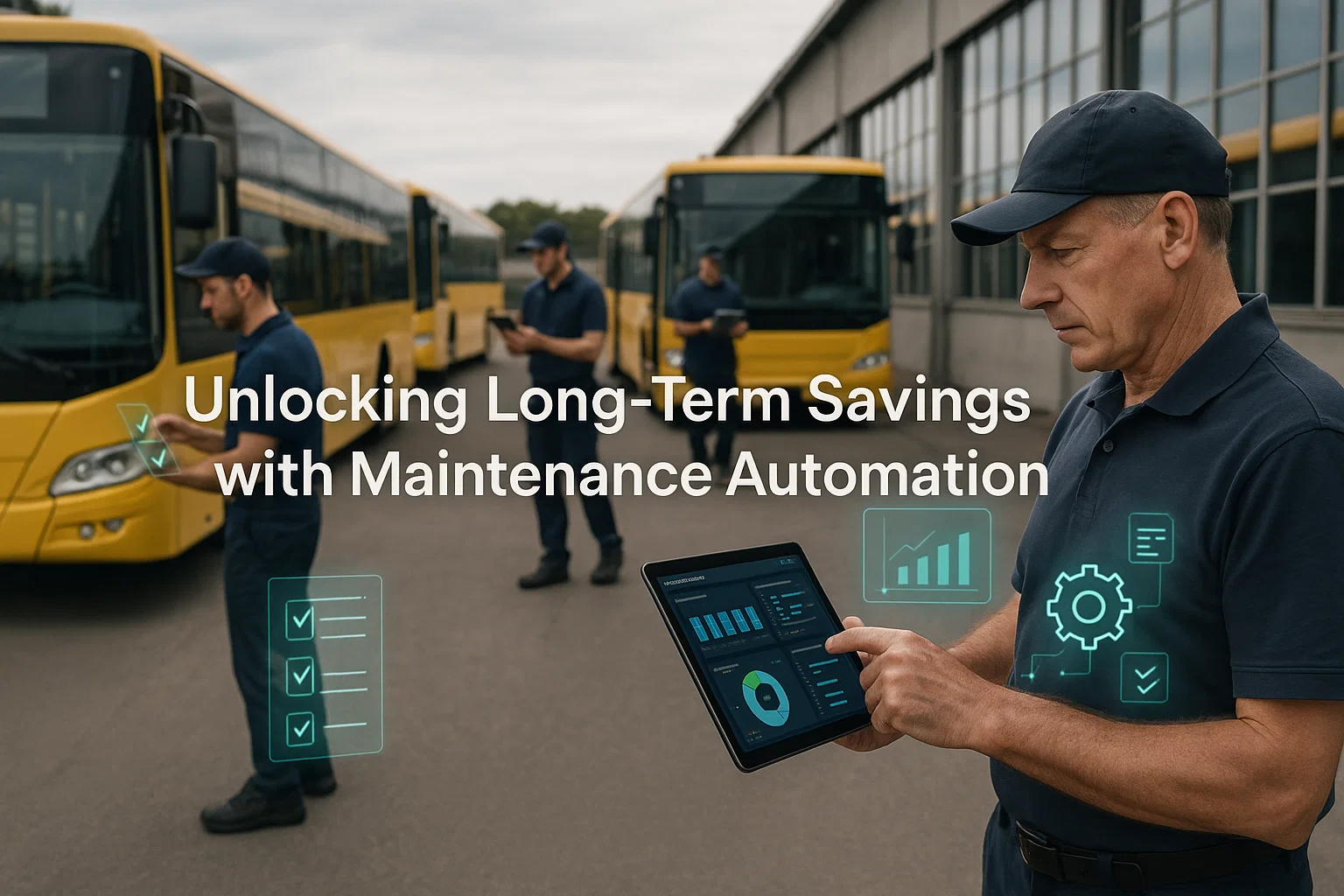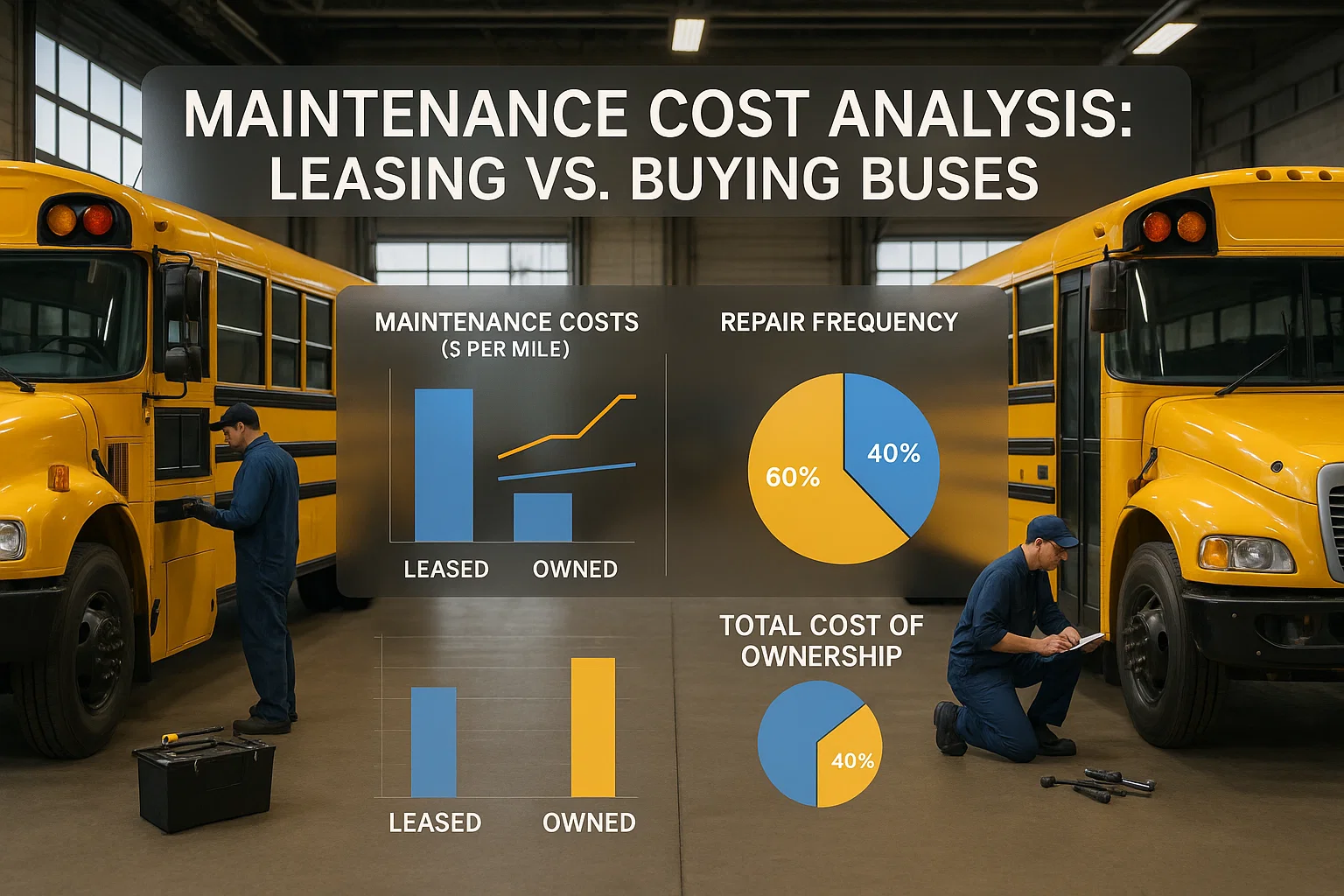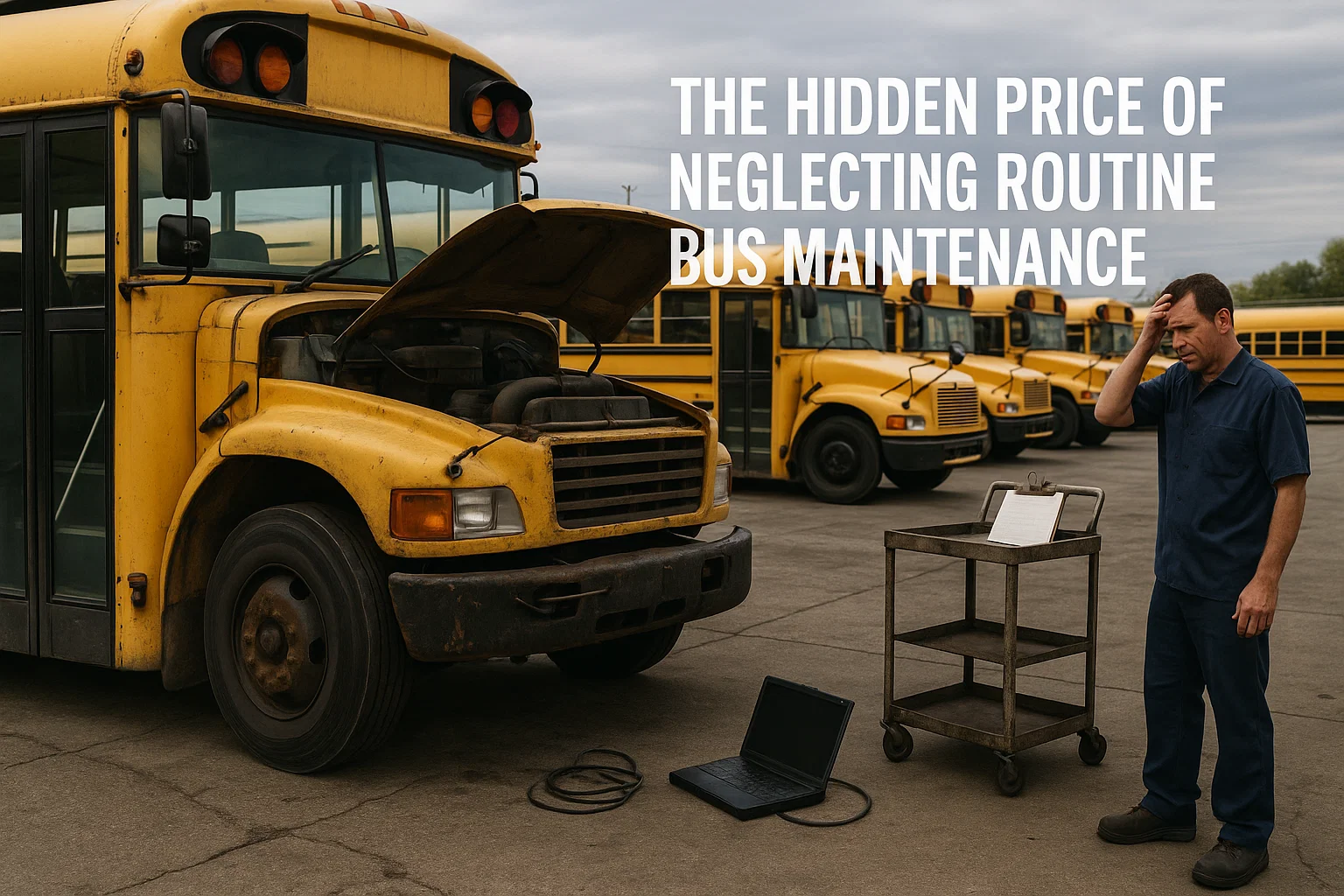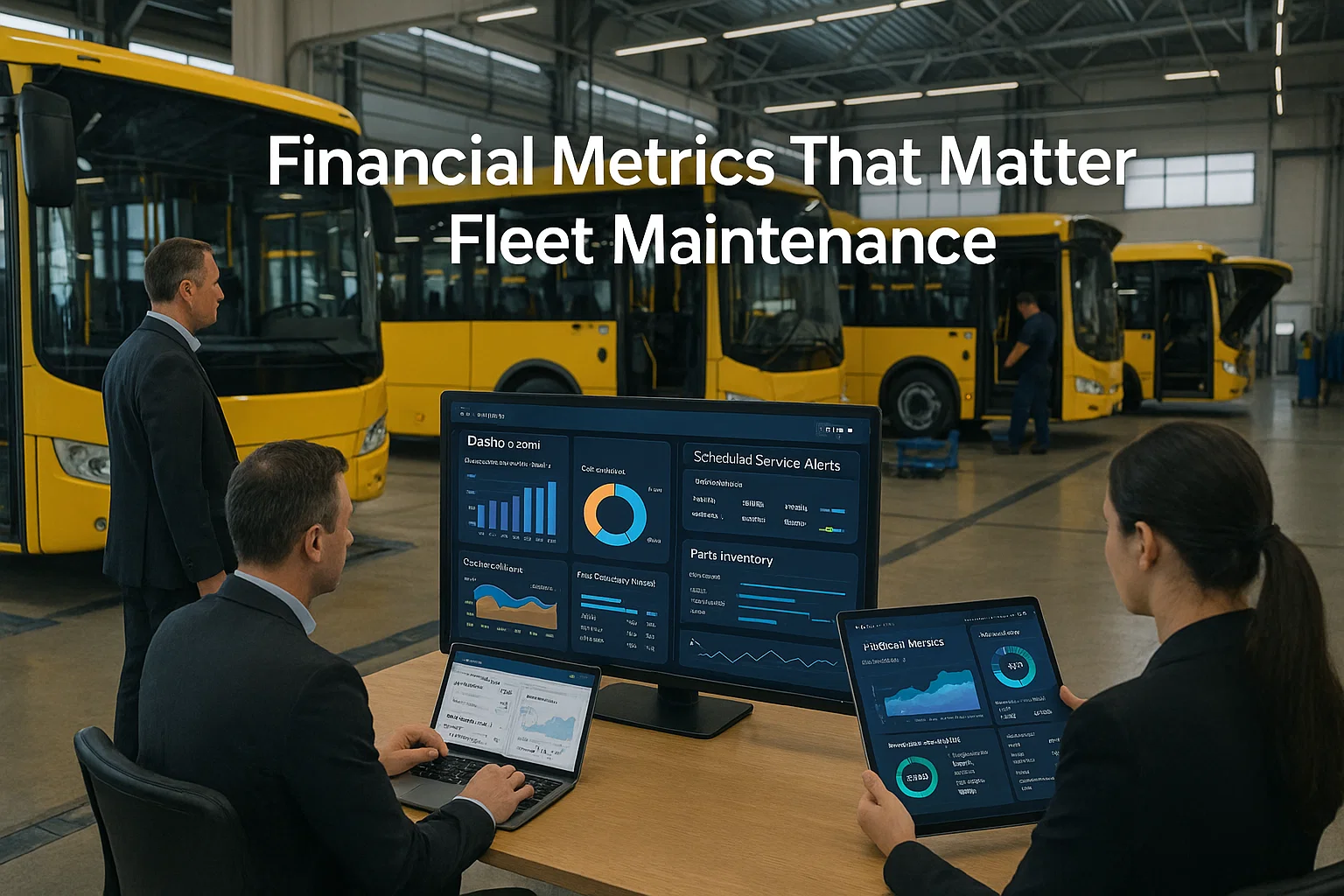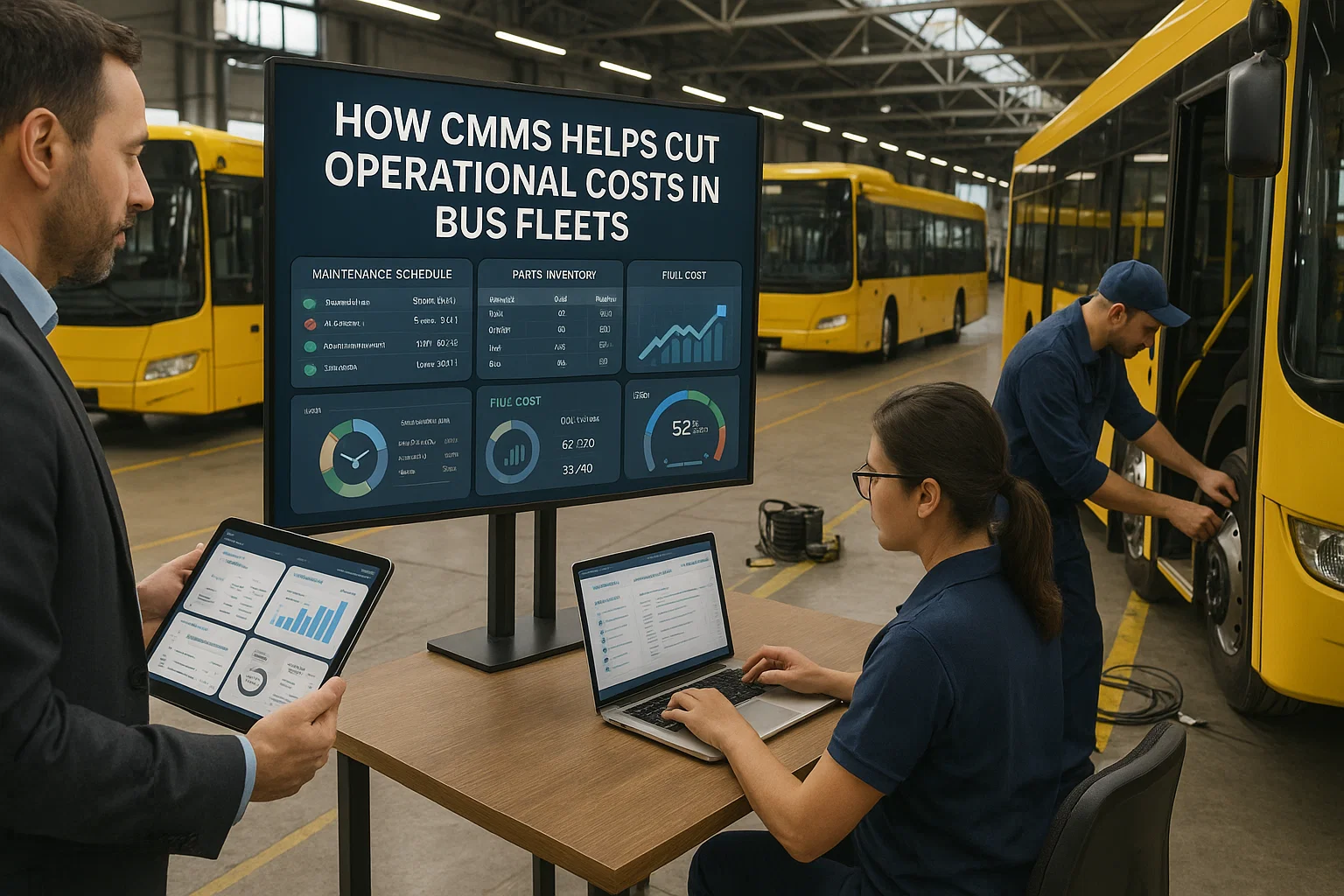Unplanned downtime represents one of the most significant challenges facing US bus fleet operators today. With each unexpected breakdown costing thousands in repairs, lost revenue, and compromised passenger satisfaction, fleet managers are increasingly turning to automated solutions. Modern Bus CMMS platforms are revolutionizing how fleets predict, prevent, and manage maintenance issues before they escalate into costly breakdowns.
The impact of unplanned downtime extends far beyond immediate repair costs. Service disruptions affect route reliability, passenger trust, and regulatory compliance. Fleet operators managing 50+ vehicles report average annual losses exceeding $500,000 due to unexpected breakdowns. This financial burden, combined with increasing pressure for operational excellence, makes automated maintenance management essential for competitive fleet operations.
Advanced Bus CMMS automation transforms reactive maintenance cultures into proactive, data-driven operations. By leveraging real-time monitoring, predictive analytics, and automated workflows, fleet managers can reduce unplanned downtime by up to 47% while extending vehicle lifespan and improving overall fleet reliability.
Understanding CMMS Automation Architecture
Modern Bus CMMS automation operates through sophisticated integration of multiple technologies. At its core, the system connects vehicle telematics, diagnostic interfaces, inventory management, and workforce scheduling into a unified platform that orchestrates maintenance activities automatically.
Core Automation Components
The automation framework begins with real-time data collection from vehicle sensors and diagnostic systems. This continuous stream of operational data feeds into analytical engines that assess component health, predict failure probabilities, and trigger maintenance workflows based on predetermined thresholds and machine learning models.
Integration capabilities extend across enterprise systems, connecting Bus CMMS platforms with fuel management systems, GPS tracking, driver performance monitoring, and financial management tools. This comprehensive integration ensures that maintenance decisions consider all operational factors, from route demands to budget constraints.
Workflow Automation Benefits
- Automatic Work Order Generation: System creates maintenance tasks based on mileage, engine hours, or detected anomalies
- Smart Scheduling: AI algorithms optimize maintenance timing to minimize service disruption
- Inventory Management: Automated parts ordering based on consumption patterns and upcoming maintenance
- Technician Assignment: Skill-based routing ensures qualified personnel handle specialized repairs
- Compliance Tracking: Automatic documentation for DOT and regulatory requirements
Critical Warning Signs of Impending Downtime
Early Detection Indicators
- Engine Performance Anomalies: Unusual vibration patterns, temperature fluctuations, or power loss indicators signal developing issues
- Fluid Level Variations: Unexpected oil consumption, coolant loss, or hydraulic fluid degradation patterns
- Electrical System Irregularities: Battery voltage drops, alternator output inconsistencies, or starter motor delays
- Brake System Degradation: Increased stopping distances, uneven wear patterns, or air pressure fluctuations
- Transmission Behavior Changes: Rough shifting, slipping gears, or unusual noise patterns during operation
Advanced Bus CMMS automation continuously monitors these indicators through integrated diagnostic systems. Machine learning algorithms analyze patterns across the entire fleet, identifying subtle changes that human observation might miss. This predictive capability transforms maintenance from reactive firefighting to strategic prevention.
Automated Alert Systems
Real-time notification systems ensure immediate awareness of developing issues. Customizable alert thresholds trigger escalating responses based on severity levels. Critical alerts bypass normal channels, directly notifying maintenance supervisors and triggering emergency maintenance protocols when safety-critical systems show signs of imminent failure.
Implementing Automated Maintenance Strategies
Successful CMMS automation implementation requires strategic planning and phased deployment. Leading fleet operators using Bus CMMS follow structured implementation methodologies that ensure smooth transitions while maintaining operational continuity.
Phase 1: Foundation Building
Data Infrastructure Setup
Establish connectivity with vehicle diagnostic systems, install necessary sensors, and configure data collection protocols for comprehensive monitoring
Baseline Performance Metrics
Document current downtime rates, maintenance costs, and fleet availability to measure improvement and ROI
Process Standardization
Define maintenance procedures, create digital checklists, and establish automated workflow triggers
Phase 2: Automation Deployment
Begin with pilot programs on select vehicles to validate automation rules and refine processes. Gradually expand coverage as confidence grows and staff becomes proficient with new systems. Bus CMMS platforms provide implementation support and best practice guidance throughout this critical phase.
Phase 3: Optimization and Scaling
Leverage accumulated data to refine predictive models and optimize maintenance intervals. Advanced analytics identify fleet-specific patterns that enable customized maintenance strategies aligned with operational demands and environmental conditions.
ROI and Performance Metrics
Fleet operators implementing comprehensive Bus CMMS automation report substantial returns on investment within 12-18 months. Key performance improvements include:
Quantifiable Benefits
- 47% Reduction in Unplanned Downtime: Predictive maintenance identifies issues before failure occurs
- 35% Decrease in Maintenance Costs: Optimized scheduling and parts management reduce overall expenses
- 28% Improvement in Fleet Availability: Better maintenance planning keeps more vehicles in service
- 52% Faster Repair Completion: Automated parts ordering and technician scheduling accelerate repairs
- 40% Reduction in Overtime Costs: Planned maintenance reduces emergency repair requirements
Beyond financial metrics, automated maintenance management improves safety compliance, enhances passenger satisfaction, and reduces environmental impact through optimized vehicle performance.
Advanced Analytics and Predictive Modeling
Modern Bus CMMS platforms employ sophisticated analytical techniques to predict component failures before they occur. Machine learning algorithms analyze historical maintenance data, operational patterns, and environmental factors to create accurate failure prediction models.
Predictive Analytics Applications
Component-level prediction models assess failure probability for critical systems including engines, transmissions, braking systems, and HVAC units. These models consider multiple variables including duty cycles, route characteristics, driver behavior, and maintenance history to generate risk scores that guide maintenance prioritization.
Fleet-wide analytics identify systemic issues affecting multiple vehicles, enabling proactive recalls or fleet-wide maintenance campaigns before widespread failures occur. Pattern recognition algorithms detect emerging trends that might indicate supplier quality issues or design flaws requiring attention.
Real-Time Decision Support
Automated decision support systems help maintenance managers optimize resource allocation during peak demand periods. The system balances multiple factors including vehicle criticality, parts availability, technician skills, and operational requirements to recommend optimal maintenance scheduling that minimizes service disruption.
Common Implementation Challenges and Solutions
Overcoming Automation Barriers
- Data Quality Issues: Implement data validation protocols and regular audits to ensure accuracy
- Staff Resistance: Provide comprehensive training and demonstrate value through pilot programs
- Integration Complexity: Partner with experienced Bus CMMS providers for seamless implementation
- Cost Concerns: Start with high-impact areas to demonstrate ROI before full deployment
- Technology Gaps: Upgrade legacy systems gradually while maintaining operational continuity
Successful automation requires organizational commitment and change management strategies. Leading fleet operators establish automation champions within their teams who drive adoption and provide peer support during transition periods.
Best Practices for CMMS Automation Success
Industry leaders leveraging Bus CMMS automation follow established best practices that maximize system value while minimizing implementation risks.
Operational Excellence Framework
Continuous Monitoring
Establish 24/7 system monitoring with automated escalation protocols for critical alerts
Regular System Optimization
Monthly reviews of automation rules and threshold adjustments based on performance data
Staff Development Programs
Ongoing training ensures teams maximize automation capabilities and adapt to system enhancements
Performance Measurement
Establish comprehensive KPI dashboards that track automation effectiveness. Monitor metrics including mean time between failures (MTBF), mean time to repair (MTTR), first-time fix rates, and preventive maintenance compliance. Regular performance reviews identify optimization opportunities and guide continuous improvement initiatives.
Frequently Asked Questions
How quickly can Bus CMMS automation reduce our fleet's downtime?
Most fleet operators using Bus CMMS see measurable improvements within 60-90 days of implementation. Initial benefits come from automated scheduling and work order management, with predictive maintenance benefits emerging after 3-6 months as the system accumulates operational data. Full ROI typically occurs within 12-18 months, with downtime reductions of 30-47% commonly reported by established users.
What makes Bus CMMS superior to generic maintenance software for fleet management?
Bus CMMS is specifically designed for transit operations, incorporating industry-specific features like DOT compliance tracking, route-based maintenance scheduling, and passenger safety protocols. Unlike generic solutions, it includes pre-configured maintenance schedules for major bus manufacturers, integration with transit-specific telematics systems, and reporting formats aligned with FTA requirements. This specialization reduces implementation time by 40% and ensures compliance with transit industry regulations.
Future of Automated Fleet Maintenance
The evolution of Bus CMMS automation continues with emerging technologies promising even greater efficiency gains. Artificial intelligence advancements enable increasingly accurate failure predictions, while IoT sensor proliferation provides unprecedented visibility into vehicle health.
Emerging Technologies
Next-generation automation incorporates computer vision for automated visual inspections, natural language processing for voice-activated maintenance reporting, and blockchain technology for immutable maintenance records. These innovations promise to further reduce downtime while simplifying compliance and warranty management.
Electric and autonomous vehicle technologies present new automation opportunities and challenges. Bus CMMS platforms are evolving to address battery health monitoring, charging infrastructure management, and the unique maintenance requirements of autonomous systems.
Conclusion
Minimizing unplanned downtime through CMMS automation represents a critical competitive advantage for modern bus fleet operators. The combination of predictive analytics, automated workflows, and real-time monitoring transforms maintenance operations from cost centers into strategic assets that drive operational excellence.
US bus fleets implementing comprehensive Bus CMMS automation achieve remarkable improvements in vehicle availability, maintenance efficiency, and overall operational performance. The documented benefits—including 47% downtime reduction and 35% maintenance cost savings—demonstrate the transformative power of properly implemented automation strategies.
Success requires commitment to data quality, staff development, and continuous optimization. Fleet operators who embrace these principles position themselves for long-term success in an increasingly competitive and regulated industry. The journey from reactive to predictive maintenance through automation not only reduces costs but enhances safety, improves passenger satisfaction, and supports sustainable fleet operations.
Ready to Eliminate Unplanned Downtime?
Discover how Bus CMMS automation can transform your fleet maintenance operations and deliver measurable ROI within months.


